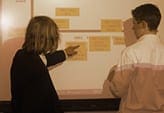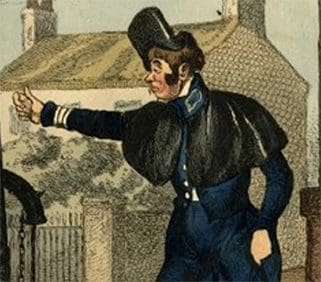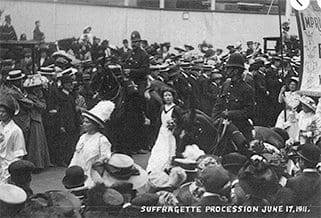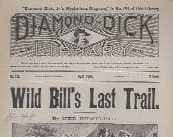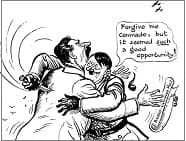
The Unholy Alliance: why on earth did Hitler and Stalin sign the Nazi-Soviet Pact when they clearly hated each other?
Starting with the historical puzzle of why Stalin and Hitler signed the Non-Aggression pact on August 1939 which so shocked the world, students then work collaboratively to work out which of the 6 given political cartoons is most effective in terms of capturing both the world’s surprise and the motivation of both the leaders. They have to make and sustain their judgement as they will be recommending just one cartoon to appear in a new GCSE textbook.
Learning objectives
- Students learn to analyse and weigh up the possible motives influencing both leaders;
- they learn to explain the paradoxical nature of the pact and can still offer a coherent and convincing explanation;
- they evaluate contemporary cartoons, drawing on criteria they generate, based on first activity.
Starter
The first part, the history mystery, asks students to work in threes to suggest possible reasons for the surprise pact. These are then shared with the whole class and ideas logged on the whiteboard to be returned to later. This not only allows students to pool any prior knowledge they may have, it also helps you to pitch the level of your later explanations.
Step 1
Now set the challenge using slide 3 of the PowerPoint. Issue students working in groups of three with their own sets of the 12 influence cards (RS1). Students read each card aloud in turn looking for the reasons that are most compelling to them. What matters most is that students thoroughly discuss the plausibility of each of the 12 ideas on the cards and then try to group them in any way they see fit. It’s important not to straight-jacket their thinking. Some may go for things that motivated Stalin and then things that motivated Hitler. Some may see it in terms of expediency as a result of failure of diplomatic negotiations; others may see it in broader terms of the aims of both leaders.
Step 2
It will be important for you to suggest the way historians now view the past.
Step 3
Now set the second challenge. Using their new-found understanding of the motivation behind the pact, ask students to work out which of the 6 political cartoons they are given (slides 4-9 from PowerPoint RS2) they would include in a new GCSE textbook that is to be published for the new 2016 exams. The cartoon must show :
1. the surprising nature of the pact
2. the paradox of the pact
3. the possible motivation of each of the leaders.
Naturally no one cartoon will be able to do this but having some criteria at least will help to focus students thinking.
Step 4
Ask one representative to come to the front, with the PowerPoint presentation displayed, to feedback on their thinking. Do this so that every chosen cartoon is covered and discuss as a class why the rejected ones weren’t thought to be as good.


